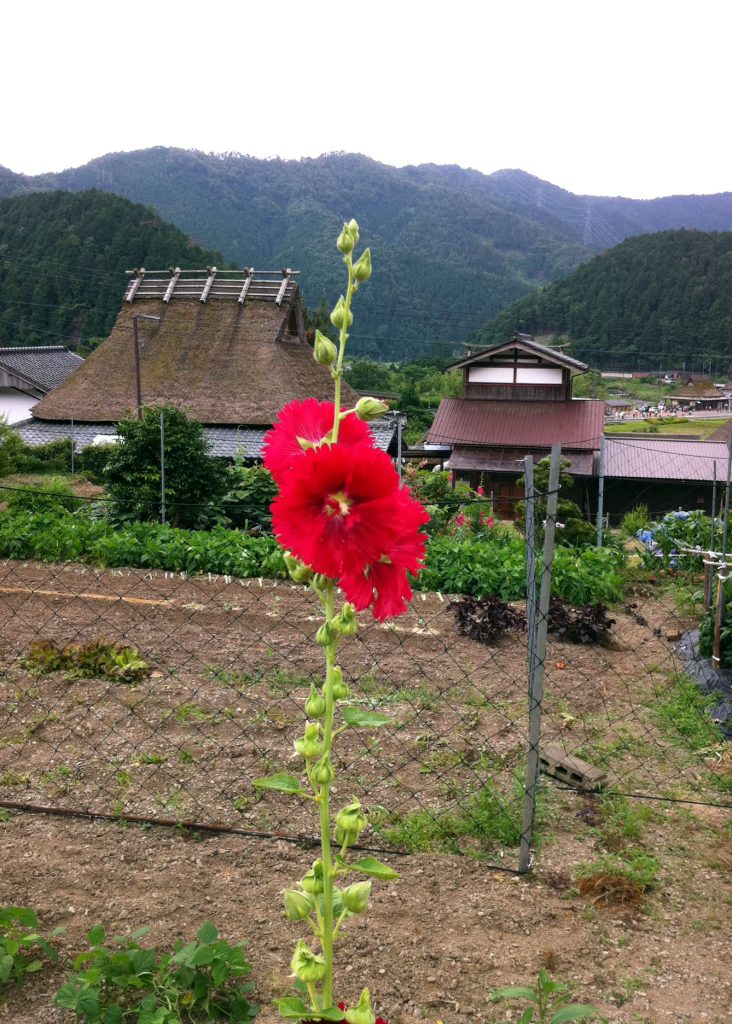
This is a standing Tachiaoi blooming in Kyoto Miyama, where many thatched roofs remain. While Tachiaoi is usually planted together in groups, for some reason, only one is planted here. The serene view of the village in the midst of the rainy season is transformed into a bright atmosphere by the presence of this bright red standing Tachiaoi, with just three flowers. It is also called “Tsuyuaoi” (literally meaning “Tachiaoi of the rainy season”) because it starts blooming at the beginning of the rainy season and its flowers fade around the time the rainy season ends. It is said to have been introduced to Japan long ago as a medicinal plant and was called “Karaaoi” during the Heian period. During the Edo period, through selective breeding, it became what is now known as “Tachiaoi” and became a popular flower. It grows tall, reaching a height of 1 to 3 meters, and the flowers bloom from the bottom to the top of the upright flower stalks. There are single and double-flowered varieties, and the colors are diverse, including red, pink, white, purple, and yellow. The diameter of the flowers can reach about 10 cm in large ones. Its English name is “Hollyhock,” and it is said to have been brought back by the Crusaders from the “Hollyhock Holy Land” in Syria around the 12th century.
藁葺き屋根がたくさん残る京都美山に咲く立葵です。立葵は普通寄せ植えするのが多いのですが、なぜかここには一本だけ植っています。梅雨最中の静かな村の景色を、この真っ赤な、それもたった三輪の立葵が咲いているだけで、明るい雰囲気に変えています。梅雨のはじまりに咲き始め、梅雨が明ける頃に花が終わるので別名「梅雨葵」とも呼ばれています。日本には、古くから薬用として渡来したといわれ、 平安時代には「唐葵」と呼ばれていました。江戸時代に品種改良が進み、今の「立葵」と呼ばれる様になって、人気の花になりました。草丈は1〜3mと高く、花は垂直に伸びた花茎の下から上に咲き上っていきます。一重や八重のものがあり、色は赤、ピンク、白、紫、黄色など多彩で、花の直径は大きなものでは10cmくらいにもなります。英名は「ホリーホック」 といい、12世紀頃に十字軍が シリアの”ホリーホック聖地”からこの花を 持ち帰ったことに因みます。
